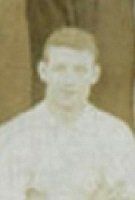


Cochran, team captain, Paton, English, Munro, Lyle, Gerard, Cooper, Al. Nichol, A. Tong and/or H. Tong, Rushton and King
John Hamilton, Young, W. Barringer, J. Fallon, Wallace, J. Denniston, J. Dykes, McLachlan, Wishart, A. and Joseph Black, George Girvan and Willie Gold,
